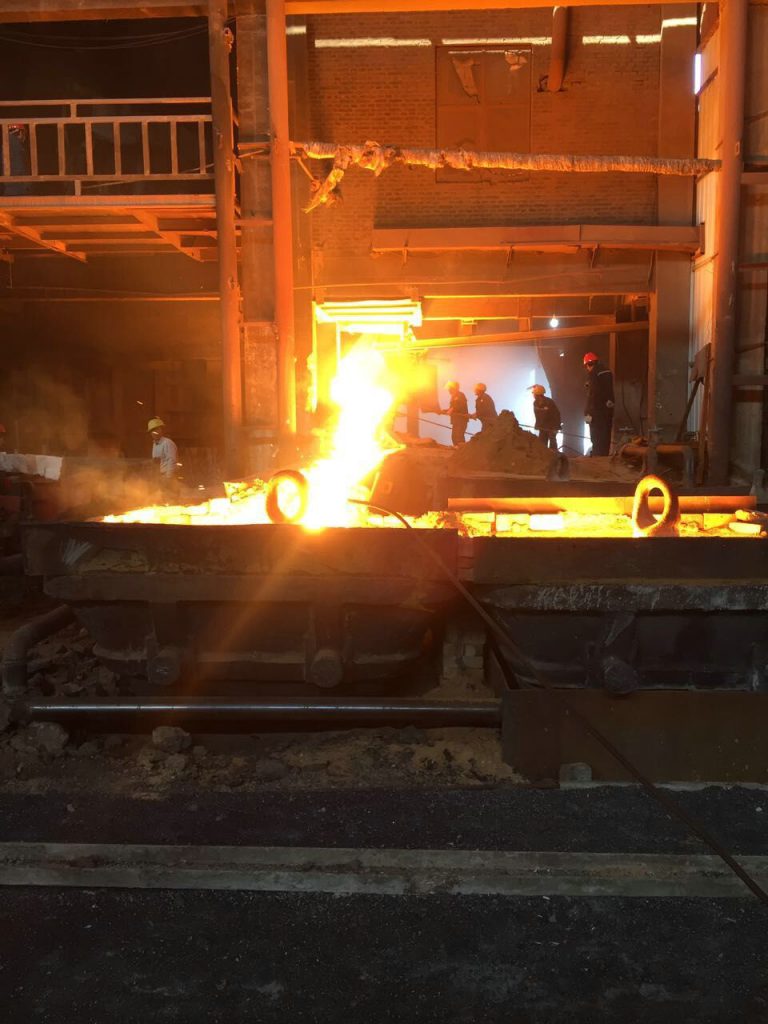Why Is Annealing Crucial for Stainless Steel Seamless Pipes?
In industries like petrochemical, aerospace, and energy, stainless steel seamless pipes are indispensable for high-performance systems. But here’s a fact many overlook – nearly every premium seamless pipe must undergo annealing treatment.
At Ganyeah Group, we integrate advanced annealing processes into the production of stainless steel seamless pipes to ensure superior ductility, corrosion resistance, and long-term structural stability. Let’s explore why this step is so critical to the pipe’s performance and reliability.

Annealing process of stainless steel seamless pipes at Ganyeah Group production facility
1. Enhancing Performance Through Annealing
Eliminating Work Hardening and Restoring Ductility
During cold drawing, rolling, or forming, stainless steel becomes hardened and brittle – similar to how bending a wire repeatedly makes it stiff. Annealing of stainless steel seamless pipes reorganizes the microstructure, restoring flexibility and making the material easier to process or bend in later stages.
Relieving Internal Stress to Prevent Cracking
Cold forming and welding introduce internal stresses that can lead to deformation, cracking, or even failure under pressure. Annealing acts like a “stress-relief yoga session” for the steel – relaxing its structure, redistributing residual stresses, and ensuring dimensional stability throughout its service life.
2. Ensuring Product Quality and Corrosion Resistance
Improving Corrosion Resistance and Extending Lifespan
The corrosion resistance of stainless steel relies on its passive oxide film. However, mechanical stress can disrupt this protective layer. Post-annealing, the microstructure becomes more uniform, allowing the passive film to regenerate effectively. As a result, annealed stainless steel seamless pipes show enhanced corrosion resistance and longer service life — a key quality standard at Ganyeah Group.
Customizing Mechanical Properties for Application Needs
By adjusting annealing temperature and duration, manufacturers can precisely tune properties like tensile strength, toughness, and elongation. Whether for high-pressure oil pipelines or medical-grade precision tubing, the right annealing process helps achieve the perfect balance between formability and performance.
3. Types of Annealing for Different Stainless Steel Grades
The annealing process varies depending on the type of stainless steel used:
| Stainless Steel Type | Annealing Method | Purpose |
|---|---|---|
| Austenitic (e.g., 304, 316) | Solution annealing (high-temperature rapid cooling) | Restores ductility and corrosion resistance |
| Martensitic (e.g., 420) | High-temperature tempering | Reduces brittleness, improves toughness |
| Ferritic (e.g., 430) | Low-temperature stress relief annealing | Eliminates residual stress, stabilizes structure |
At Ganyeah Group, each pipe batch undergoes temperature-controlled furnace annealing followed by precision cooling, ensuring consistent metallurgical structure and compliance with ASTM A312 and EN 10216-5 standards.
4. Why Annealing Defines Pipe Quality at Ganyeah Group
Unlike ordinary suppliers, Ganyeah Group integrates automated annealing furnaces into the production of every stainless steel seamless pipe, ensuring uniform grain structure, reduced brittleness, and enhanced corrosion resistance. Our strict quality control includes surface roughness testing, hydrostatic testing, and eddy current inspection – guaranteeing every pipe meets international quality benchmarks for petrochemical, marine, and food-grade systems.
Through continuous innovation and precision heat treatment, Ganyeah Group provides annealed stainless steel seamless pipes that deliver superior durability, weldability, and mechanical stability – essential for critical industrial pipelines worldwide.
